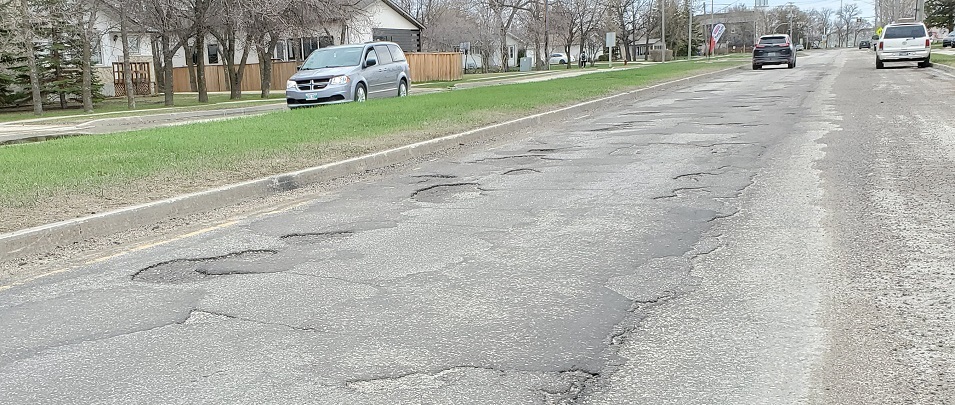With 2016 property taxes in our hands, we’ve had an opportunity to see what living in this community will cost this year. Most of you have done a quick analysis of last year’s bill to see how it stacks up. But what may be just as important is how we stack up against other communities.
In order to prepare a relatively fair analysis, I searched rural communities in Manitoba with similar-sized populations. Based on the 2011 census, these included Oakbank and Altona. (Officials in Stonewall were unavailable for comment).
In order to adequately compare property taxes, one must understand how they work. This is where it may be helpful to have your tax bill in front of you.
The process begins at the governmental level when a municipal agency studies the property market to determine your home’s fair market value. According to the Municipal Assessment Agency’s website, they do not decide the market value of your home; buyers and sellers do. It is not a random number they make up, and they don’t strategize with town councils to determine it. These assessment values are available online. Assessments take place every two years. The last one was done in April 2014.
Municipal guidelines state that only a percentage of your home’s value can be taxed. For example, homes that fall into the Residential 1 category are only subject to tax on 45 percent of their assessed value. Most business properties are taxed at 65 percent. If you own a home that’s been assessed at $300,000 (resale value), the portion of your home that is taxable would be $135,000 ($300,000 times 45 percent). This is called your “portioned assessment.”
The local council of every community establishes its own municipal mill rate (MMR). The mill rate may go up or down, depending on that council’s budget and the amount of taxes needed to pay for town services. The average property value is taken into consideration when developing Niverville’s MMR. Rather than using the average home valuation, Eric King, Niverville’s Finance Administration Manager, says they remove from the equation unusually high and extremely low home values to avoid skewing the average. Based on the 2014 assessment, Niverville’s current average home value is at $291,400.
Once the municipal mill rate has been established by council, your portioned assessment is multiplied against that number to calculate your municipal property taxes. If your portioned estimate is $135,000 and council’s mill rate is set at 10, your general taxes come to $1,350.00 ($135,000 divided by 1,000 multiplied by 10).
Niverville’s 2016 MMR is set at 12.062, while Altona’s is 19.73 and Oakbank’s is 9.38. In Niverville, a $300,000 home would cost you $1,628 in municipal taxes while in Altona, the same home would cost $2,664, and in Oakbank it would $1,266. Though there is a disparity demonstrated here in mill rates, one must take into consideration a town’s proximity to a major city and the variety of services available in each respective community when deciding whether the taxes add up to adequate value.
It’s important to note the additional fees on your tax bill as well. It is typical for every town council to add levies. Niverville’s council adds additional fees for waste collection. Special services, including policing, fire, EMR (emergency medical response), and street lighting, have their own mill rate which I have included in the 12.062 mill rate shown earlier.
Some residents may also see an LID (land improvement district) fee. These allow the town to recover costs for street improvements and are often spread out over a number of tax bills. According to Mayor Myron Dyck, the current council no longer collects for street improvement in new developments but rather passes these costs on to the developer, who factors them into the purchase price of a lot.
The third item on your tax bill is school taxes. Each school division determines its own mill rate based on the operational needs of the schools within that district. This rate is submitted to town councils, who are expected to collect it on property tax bills. Councils have no control over the school division mill rate (SDMR).
Hanover’s 2016 SDMR is set at 14.944 while the Border Land School Division (Altona) is 14.97 and Sunrise School Division (Oakbank) is 13.295. Once again, these taxes are calculated against the portioned assessment of your home.
Within the last number of years, the provincial government introduced an education tax credit. For most homeowners, this amounts to a discount on your tax bill of $700. This tax credit does not apply to businesses. Instead, businesses see an added Educational Support Levy over and above the school taxes they must pay. This levy is set by the province at 10.5 mills. This means that Niverville businesses actually pay almost four times more in school taxes than homeowners. Businesses in other rural communities would see similar figures.
Keep in mind that businesses are also taxed at a higher percentage of their assessment values. Where a $300,000 home is calculated at 45 percent to determine the portioned assessment ($135,000), a business also assessed at $300,000 is calculated at 65 percent, making their portioned assessment $195,000. This means they pay much higher municipal taxes across the board.
It is easy to see, then, that a push for industrial and commerical growth in a community, whether existing or new, benefits its residents. Since a town council’s budget is set at a specific dollar figure and portioned at different levels to residents and businesses, more businesses, or the expansion of existing businesses, provides extra tax dollars to help cover the budget.
Certain taxes, such as water and sewer, don’t show up on our tax bills. They are charged by town council on a quarterly basis. Niverville’s water rates as of July 1 are calculated at $10.54 per 1,000 gallons. Altona’s water is at $12.38 per 1,000 gallons. Oakbank uses a different method of water rate calculation, making an accurate comparison difficult.
On the same note, Niverville’s sewer rates are set at $62.20 per quarter whereas Oakbank’s are $65.67 quarterly. Altona charges sewer rates based on a different model, making a comparison difficult.
It needs to be added that, in terms of taxation, nothing is simple. The overview presented here is generalized and provides some very basic examples of how taxes work and how we stack up against other communities. Certainly, many factors come into play that have not been mentioned here.



















